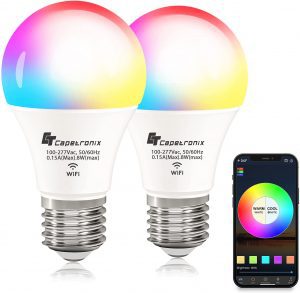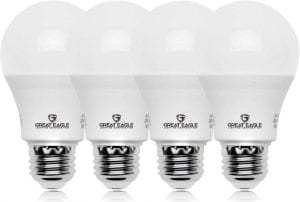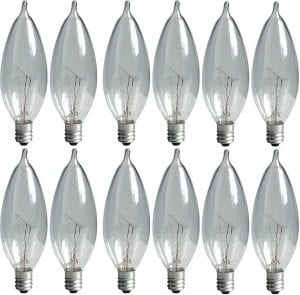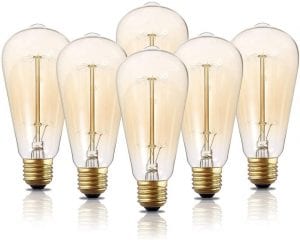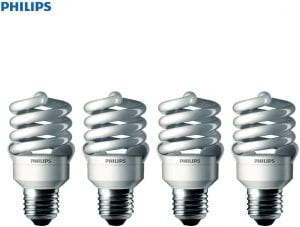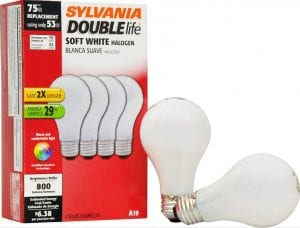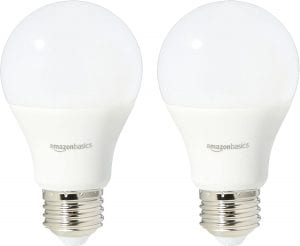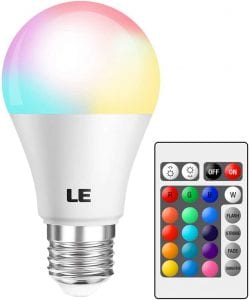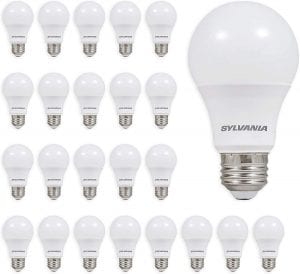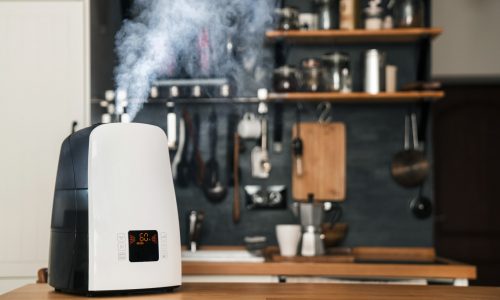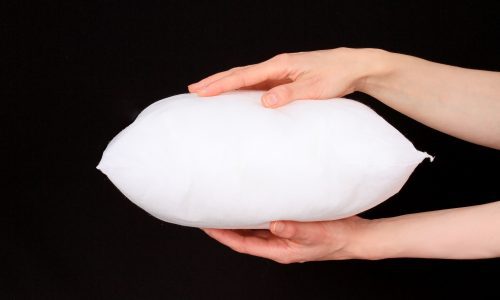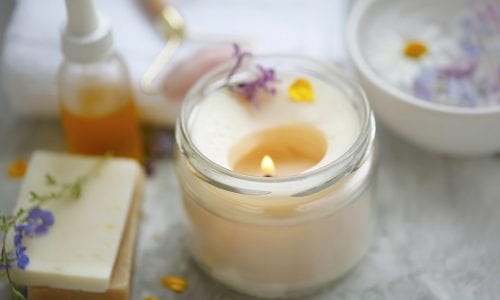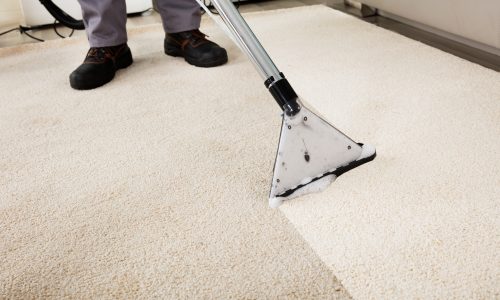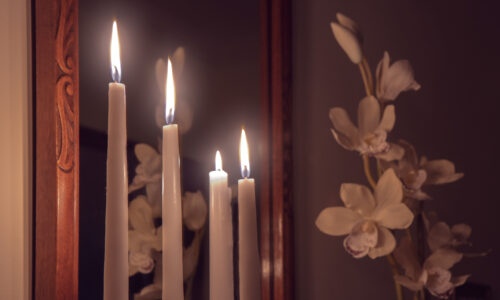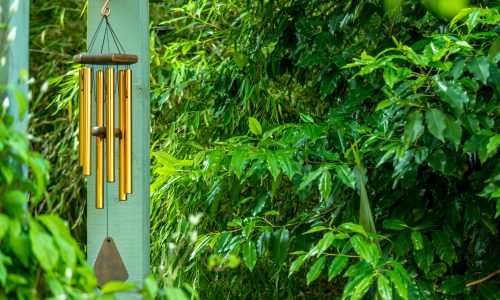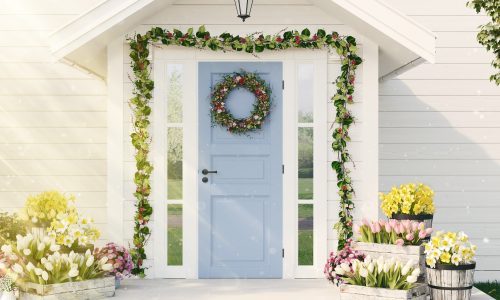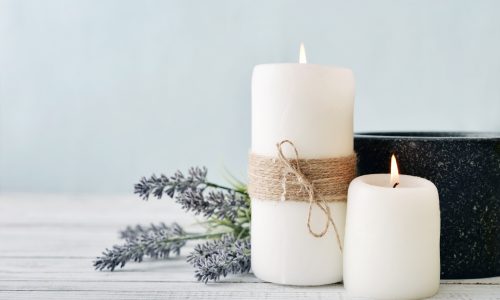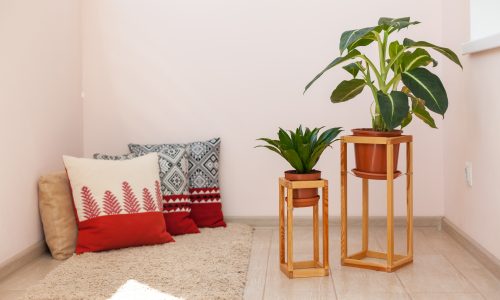The Best Lightbulb

Our Review Process
Don't Waste Your Money is focused on helping you make the best purchasing decision. Our team of experts spends hundreds of hours analyzing, testing, and researching products so you don't have to. Learn more.
Our Picks For The Top Lightbulbs
- 1. CT CAPETRONIX Smart Light Bulbs Alexa Dot Accessories, 2-Pack
- 2. Great Eagle A19 LED Non-Dimmable Lightbulb, 4-Pack
- 3. GE Lighting Crystal Clear Dimmable Lumen Bent Tip Lightbulb, 12-Pack
- 4. HESSION Vintage Dimmable Edison Lightbulb, 6-Pack
- 5. Philips LED Energy Saver Compact Fluorescent T2 Twister Lightbulb, 4-Pack
- 6. SYLVANIA Double Life Soft White Halogen Incandescent Lightbulb, 4-Pack
- 7. AmazonBasics Soft White Non-Dimmable A19 Lightbulb, 2-Pack
- 8. Lighting EVER A19 RGB Color Changing Lightbulb
- 9. SYLVANIA A19 Soft White LED Lightbulb, 24-Pack
These color-changing, standard-sized 60-watt-equivalent bulbs can be used in your home’s light fixtures; control individual lights or groups of them through an app. Use the voice-controlled smart bulbs with your Alexa, Echo Dot, Google Home Assistant, Apple's Siri or other AI devices.
Super ConvenientControl your lights with a simple voice command thanks to this smart, color-changing bulb that also interacts with your other devices.
Sold in packs of four, these 9-watt LEDs replace 60-watt bulbs for more eco-friendly lighting. They are energy-efficient, reach full brightness instantly and have a life of 10,000 hours.
Long-Lasting, Soft WhiteEnjoy a better day with these earth-conscious and elegant white bulbs.
Decorative incandescent lights add a touch of magic to fixtures with visible bulbs. These 40-watt bulbs are dimmable and durable.
Reliable, Candlelit CharmEnjoy a warm, soft light for chandeliers, sconces or candelabras with these decorative bulbs.
These Edison bulbs provide a subtly warm addition to any room’s lighting plan. With tungsten filament inside a transparent light amber glass, you’ll get old-world beauty and modern reliability.
Hip, Vintage AllureThese stylish bulbs are dimmable and have an average life of 3,000 hours.
Buying Guide
Lightbulbs come in four types: incandescent, halogen, compact fluorescent and LED. The incandescent bulb produces light by heating a filament, has a short life span and requires the most energy of any of the four types. Due to updated legal standards for lightbulbs, standard incandescent bulbs are no longer being made, but incandescent chandelier and other specialty bulbs remain on the market.
Halogen bulbs, which also make light through a heated filament, require more energy to use and have shorter life spans than compact fluorescent or LED bulbs. Compact fluorescents, which have a spiral shape, are the only one of the four that use mercury, and they light up more slowly than other types of bulbs. LED bulbs are the most efficient and longest-lasting of the four types, and as a result they tend to be more expensive.
It’s important to consider the brightness (measured in lumens) and light color (measured in Kelvin) when buying lightbulbs. We often think about brightness in terms of the older incandescent bulbs, where 60 watts produced 800 lumens. However, more energy-efficient bulbs use less electricity to produce the same brightness: a 12-watt LED bulb gives off the same 800 lumens of light while using a fraction of the power.
Bulbs supply four different colors of light: soft white, warm white, bright white and daylight. Lower-Kelvin bulbs offering a softer, yellower light that can feel more warm and welcoming, while higher-Kelvin bulbs provide brighter illumination with light in the white and blue ranges.
What to Look For
- Before purchasing lightbulbs, check the maximum recommended wattage for your lamp or light fixture. Never exceed this amount for the sake of safety.
- If a bulb does not immediately seem to fit your fixture, do not force it into place. This is a fire hazard.
- Different bulbs are often required for indoor versus outdoor light fixtures. Check the instructions that accompanied your fixture for details.
- If your lights are going to be used with motion sensors or dimmers, check the bulb packaging to make sure it’s compatible.
More to Explore
Though Thomas Edison is often credited as the inventor of the light bulb, multiple other inventors had used heated filaments for lighting. Joseph Swan developed and patented a light bulb in England the exact same year Edison did, in 1879. Edison’s greatest contribution to electric lighting was in designing and promoting structures for generating and delivering electricity into homes and businesses.

